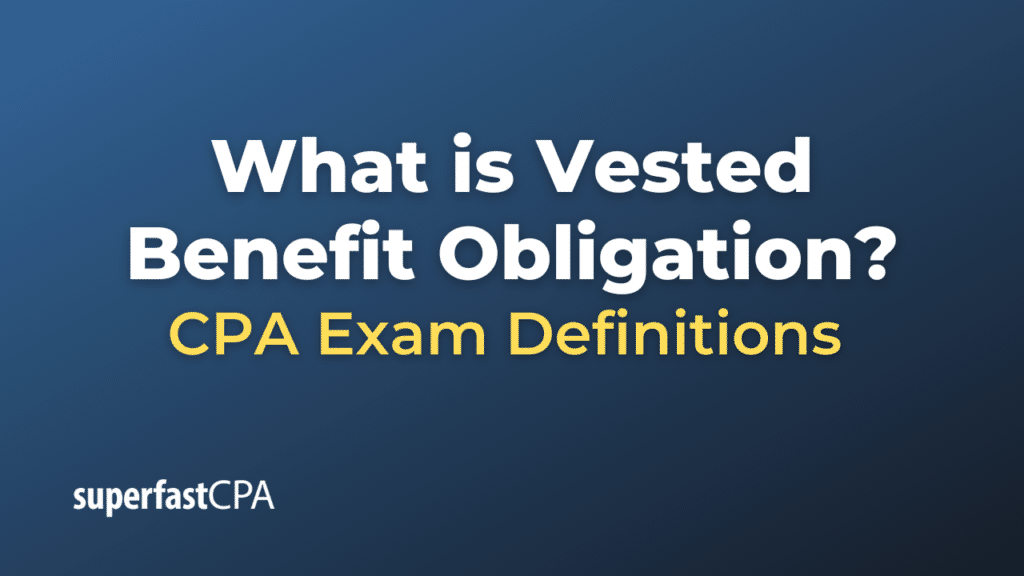Vested Benefit Obligation
The Vested Benefit Obligation (VBO) is a measure used in the context of pension accounting to represent the present value of pension benefits that are vested as of a particular date. In other words, it is the amount that a company would owe to its employees if the pension plan were to be terminated immediately. These are benefits that employees have already earned the right to receive, regardless of their future employment with the company.
The VBO is a component of a broader measure called the “Projected Benefit Obligation” (PBO), which also includes benefits that employees are expected to earn in the future. The VBO is important for understanding a company’s immediate obligations under its pension plan, whereas the PBO gives a more complete picture of the long-term obligations.
Factors affecting VBO:
- Employee Tenure: The longer an employee has been with the company, the larger the vested benefit they have accrued.
- Interest Rates: The discount rate used to calculate the present value of future pension payments can significantly affect the VBO.
- Salary: Many pension benefits are calculated based on an employee’s salary, so increases or decreases in salary can affect the VBO.
- Changes in Law or Pension Plan Rules : Amendments to federal or state laws, or changes to the pension plan itself, can affect how benefits vest and, consequently, the size of the VBO.
- Demographic Factors: This includes employee turnover, life expectancy, and other factors that can change the number of employees who will claim the vested benefits.
Example of Vested Benefit Obligation
Let’s illustrate the concept of Vested Benefit Obligation (VBO) with a simplified example.
Company Scenario
- A company named “TechWiz” has a pension plan for its employees.
- The pension plan vests after an employee has been with the company for 3 years.
- There are a total of 100 employees at TechWiz.
Employee Categories
- Category 1: 50 employees have been with the company for more than 3 years and have fully vested pension benefits. Each of these employees is entitled to an annual pension payment of $10,000 upon retirement.
- Category 2: 30 employees have been with the company for 1 to 2 years. They have not yet vested and are therefore not included in the VBO calculation.
- Category 3: 20 employees are new hires and also have not vested any pension benefits yet.
Calculating VBO
- For Category 1 employees who are fully vested:
- 50 employees x $10,000 per employee = $500,000
- Category 2 and Category 3 employees are not considered because they haven’t vested their benefits yet.
- So, the total Vested Benefit Obligation (VBO) for TechWiz is $500,000.
This $500,000 represents the obligation that TechWiz would have to fulfill if it were to terminate the pension plan immediately, based solely on the employees who have vested benefits. It gives a snapshot of the company’s immediate financial obligations in relation to its pension scheme.
Note: In a real-world scenario, calculating the VBO would involve discounting these future pension payments to their present value, considering factors like employee turnover, mortality rates, and interest rates. But for simplicity, we’re using a straightforward approach in this example.













